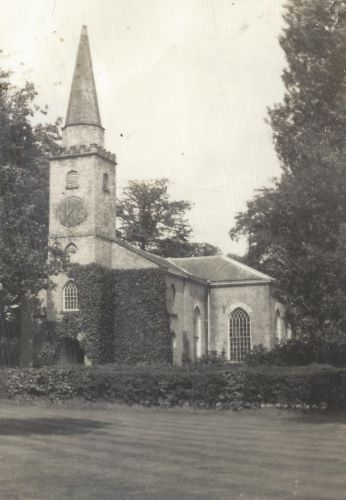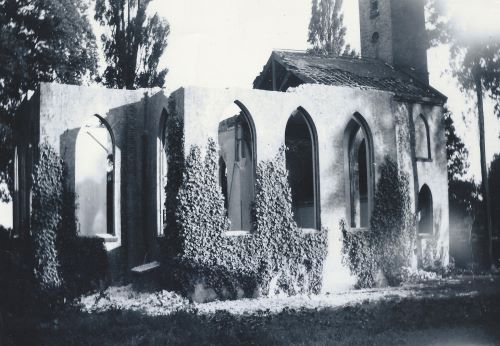St Mary's Church, Gateforth 1825 - 1948

St. Mary’s Church, Gateforth was built of grey-white brick and stone. It was situated
next to Church Lodge, on the south facing side of the Hough, close to
the Hall. It cost Humphrey Osbaldeston £4,000 to build the Chapel in 1825.
The
Chapel was almost cross-shaped, with a small chancel at the east end
and a tower at the west end where the main door was located. The tower was a
smaller replica of the octagon tower and spire at Brayton, only the
octagon was of brick and had battlements.
Inside the chapel it
was white plastered and had a set of three identical windows along the
south and north walls of the nave, the windows having leaded lights.
The pulpit was a most impressive three-decker one, for taking the
service from one level, the lectern on the next, and the sermon from the
top. The stone in the building came from Monk Fryston and was drawn on
oxen carts to Gateforth. The church also had an old barrel organ,
together with a harmonium.
Under the Chapel near to where the
pulpit was, there is the Osbaldeston Vault. Buried there are –
Catherine Osbaldeston, Humphrey Osbaldeston, Theodosis Brooke, Humphrey
Brooke Firman and Brooke Firman, Lt Colonel.
The vault is all that remains on the site of the former church and it was sealed after the demolition in 1948.

The
church fell into disrepair after the Hall became a Sanatorium under
Leeds Corporation. Just before its demolition, quite a lot of its
contents went to the Corporation. The organ went to St. James Hospital
in Leeds. The barrel organ that had been in the gallery of the Church
was given to Leeds City Museum. One of the two alters is now the main
alter in Hambleton, the pulpit went to St. James Hospital, Leeds. The
cupboards are in Hambleton Church along with the Communion plated
chalice.
After
the closure of the Village School, a Mission Room was formed therein which
the community used for recreational meetings and Church Services until
the Church Authority sold it in 1977.